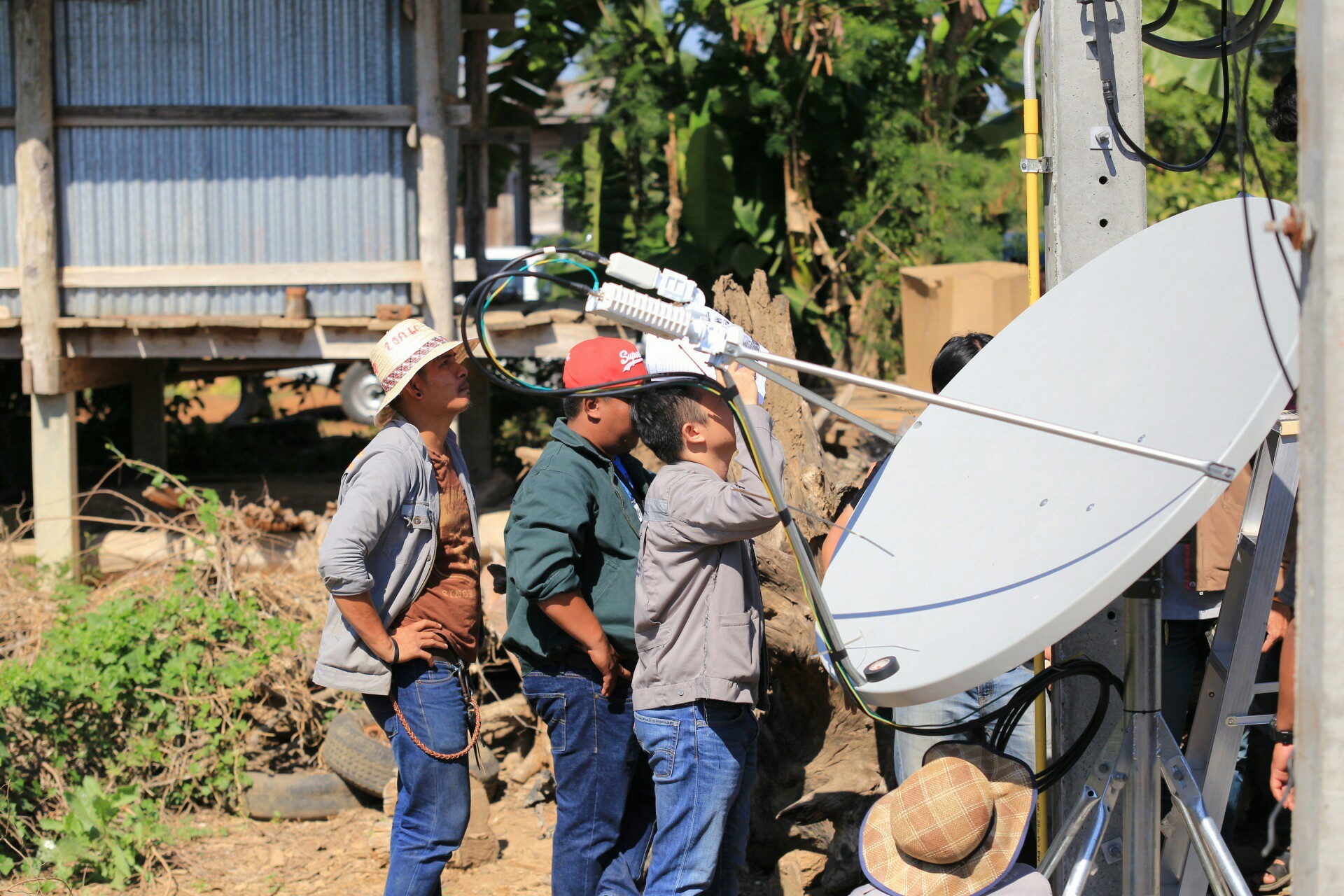
The future of satellite industry
There is a lot of room for growth within the satellite industry. I’m optimistic of that as space is no longer restricted to governmental bodies and public funds.
As we enter Space Age 2.0, the satellite industry will further advance with more room for private companies and those with private funds to participate in the market. We will definitely witness the growth of the private sector in the satellite and space industry like never before.
Satellite industry forecast

Satellite teleport in Thailand
Currently, most of the satellites in space are Geosynchronous Earth Orbit (GEO). In Space Age 2.0, however, industry forecast predicts a tremendous increase in development of Medium Earth Orbit (MEO) and Low Earth Orbit (LEO) satellites.
The reason for the rise of MEO and LEO satellites will be mainly due to the growing demand for high-speed data transfer. Since MEO and LEO satellites are closer to Earth compared to GEO satellites, their lesser distance from Earth makes them more suitable for faster data transfer. In addition, the number of smaller type of satellites, called microsats, is on the increase due to cheaper production cost and less assembly time.
Changes in the industry will not only take place in space, but we will see advancements in ground systems as well. In the future, many of our satellite dishes will be replaced by flat array antennas where it will be no longer necessary to adjust the dishes to receive a signal. Flat array antennas will also help us access the internet and entertainment systems while on the move, as they are portable and can easily be fitted on the roofs of cars and other transportation systems.

A child in rural Thailand taking distance education via the internet
Definitely, consumers will benefit from these changes not only because of the diversity of satellite service providers in the market, but also because the price for satellite services will go down due to increased competition. This would absolutely help make the world more connected to the internet than ever.
With these developments in the industry, I’m optimistic that the satellite industry will continue to advance in 2019 and well beyond. Serious investors looking for new investment frontiers should, therefore, get on board the industry and look for opportunities while Space Age 2.0 is still in its infancy stage.










